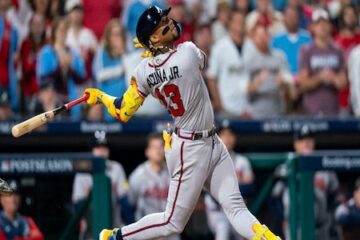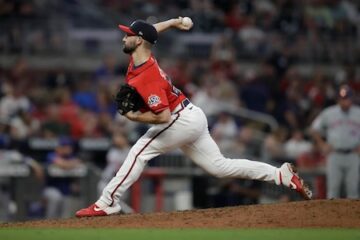2017 Fantasy Baseball: The Life of the Auction

One of the favorite pastimes of the fantasy writer is to take their readers through their draft processes and to brag about who they got on their team. I’ve usually tried to avoid doing that because it involves a little vanity and I’ve spent a lifetime being a kind of killjoy for the careers of baseball players. Fantasy players on my teams usually suffer similar calamities as the Madden Curse, so we should probably avoid that.
That being said, I participated in my first auction this week and learned some general tidbits I can pass along to those few who may read this article. So, below are a few rules of thumb or differences between auctions and traditional drafts. Hopefully, this can help you if you are trying your hand at an auction for the first time.
Budget More Time
The biggest thing that surprised me was the difference in time between a draft and an auction. I began my auction at 8:00 PM and went well past midnight. I didn’t even make it to the end as the computer gods picked my last player. This can be a challenge for those of us with families or other commitments. Luckily, we were able to take a couple of breaks, but you will be in it for the long haul and there is no way to have a computer auto-pick for you.
Plan Your Budget
It is easy to get caught up in the moment of being able to bid and win every bid. However, most auctions give you a limit around ten dollars per roster spot. So, it is really easy to blow through your budget less than half way through the draft. So, you really need to go into the auction with an idea of how you want to build your team. Obviously, this depends on the format your league is going with. Standard head to head 5×5 leagues will call for a different strategy than six category leagues, rotisserie leagues, or total point leagues.
There are consequences to spending big early and for saving your money until the end. Neither is necessarily a horrible strategy depending on what you want to accomplish. If you feel confident that you can identify value late then it might be a good idea to win some early big bids on the big stars. If you prefer a deeper and more balanced lineup then saving until the end is a good idea. You can get some good players for fantastic prices at that point, but you likely won’t get any great ones.
Choose who to nominate carefully
Auctions go through a snake just like drafts, but instead of drafting you simply nominate a guy to bid on. The effect early on is almost the opposite of a draft in that you usually won’t get the guy you nominate. That happens later in the draft as well if you are low on cash. So, most of the time you are better off nominating someone you don’t want than someone you want. This is particularly true if it is an overrated player that the others will step on each other to bid for. For instance, Mike Trout is great, but if you can get everyone else to go over 50 dollars for him then you just blew a hole in someone else’s budget.
Get to know the platform
Everyone has their favorite sites they like to go to, but if you have never participated in an auction before, it can be an intimidating experience just going through the interface. For instance, some will give you a suggested price for a player to help you in your bidding. Others will allow you to up your bid by a dollar at a time or multiple dollars. Obviously, there are other screens that help you plan ahead. For example, I can look at individual positions or overall values. I can look at my roster and I can look at the budgets of every player in the draft to know who can outbid me.
Take Notes
You can be like a college student and actually take notes or you can simply take mental notes. Either way, have some fun and learn from the experience. There will be things I do differently in my section auction based on what happened in my first. Then again, every auction like every draft is unique in the strategies that the players bring to the table.
Author’s Note: We will continue to auction tiered series next week. The dollar values represent the average auction values up to the point when the articles are written.





